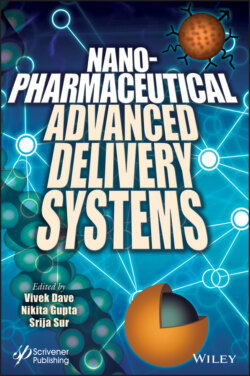Читать книгу Nanopharmaceutical Advanced Delivery Systems - Группа авторов - Страница 21
1.3.5 SMEDDS, SEDDS, and SNEDDS
ОглавлениеVarious techniques are used to increase the oral bioavailability of poor soluble drugs [50-52]. As it gives high degree of patient tolerance, the oral route is the main route in the chronic treatment of various kinds of diseases. Nonetheless, 50% of drugs are mainly obstructed by oral delivery due to their high lipophilicity [53]. In recent years, various types of lipid-based carrier system such as self-micro emulsifying drug delivery system (SMEDDS), self-emulsifying drug delivery system (SEDDS), and self-nano emulsifying drug delivery system (SNEDDS) are the most promising approaches for improving bioavailability of drugs that are in insoluble lipophilic phase [54]. SMEDDS often provides a different feature. SMEDDS is defined as isotropic formulation of fine oil-in water (o/w) microemulsion formed by surfactants, co-surfactants, or drug and lipid mixtures, when combined with gentle stirring in aqueous media. These systems are important in improving oral bioavailability and are of primary interest to researchers, as a result of being a potential drug delivery through the incorporation of a wide range of drug molecules inside the vehicle. SMEEDS produce clear microemulsions of less than 50 nm of oil concentration and surfactant with HLB>12. SEDDS have been used to enhance the absorption of the drug via oral route [55-59]. Such formulations form fine oils rapidly in water emulsion or micro-emulsions when diluted in water [60], which are responsible for a negative free energy demand for forming emulsion [61]. Therefore, SEDDS are quickly dispersed throughout the GI tract and offer the agitation required for emulsification due to stomach and small intestine motility. SEDDS comprise the combination of oil, surfactant, and other chemicals and drugs. The selection of the lipid and the surfactant is done with their maximum ratio for optimum self-emulsifying property for the formulation [62-65]. In addition, it has been often shown that surfactant blending has superior emulsifying properties in comparison with the use of one single hydrophilicity–lipophilicity balance (HLB)-containing surfactant to attain the HLB quality, essential in emulsification process. The smooth mixing of aqueous media produces emulsion in the range of 10–100 nm with a droplet size. Droplets of emulsion were then spread into the gastrointestinal tract to meet the absorption point in SEDDS by emulsifying into the stomach [62]. SNEDDS is thermodynamically stable and the isotropic mixture of natural or synthetic oil, surfactant, and co-surfactant ability to form non-ionized (o/w) or (w/o) nanoemulsion dispersion under moderate agitation with particle diameter of 200 nm [66-67]. SNEDDS is important for oral absorption when formulating with medium-chain glyceride oils and non-ionic surfactants. In order to offer a large interfacial region between the oil and the aqueous phase, SNEDDs are of stable nanoemulsion. It enhances drug dissolution rate and increases drug formulation bioavailability. The formulation is usually incorporated into gelatin (soft/hard) or hydroxypropylmethyl cellulose capsules, which provides patient enforcement and is used commercially. The important factor in formulating liquid soft gelatin capsule is that the volume should be 1 g maximum [68].
Similarly, the differences between the three lipid-based carrier systems are given in Table 1.2 [69].
